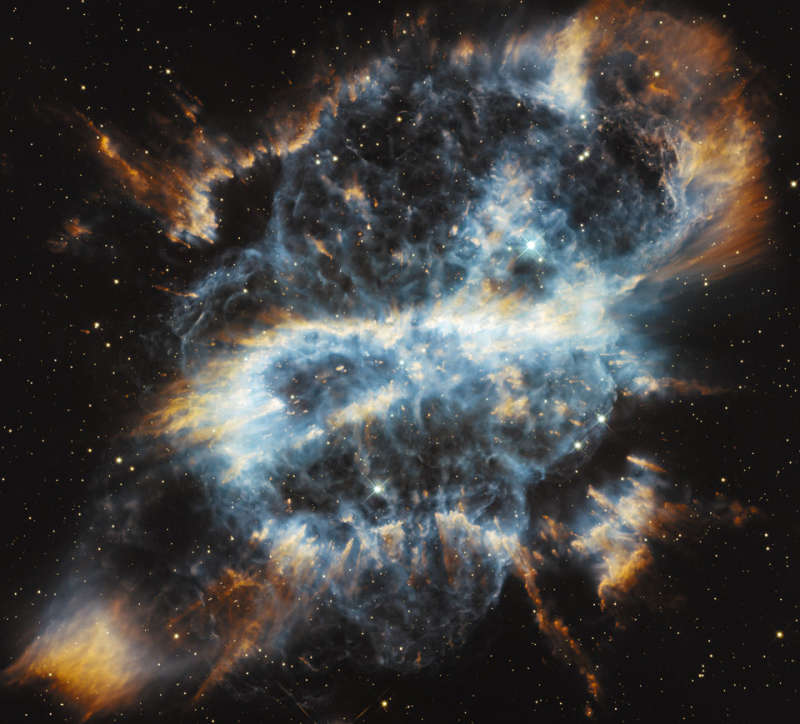NGC 5189: An Unusually Complex Planetary Nebula

Explanation:
Why is this nebula so complex?
When a star like our Sun is dying, it will cast off its outer layers, usually into
a simple overall shape.
Sometimes this shape is a
sphere, sometimes a
double lobe, and sometimes a
ring or a
helix.
In the case of planetary nebula
NGC 5189,
however, no such simple structure has emerged.
To help find out why, the Earth-orbiting
Hubble Space Telescope
recently observed
NGC 5189 in great detail.
Previous findings
indicated the existence of multiple epochs of material outflow,
including a recent one that created a bright but distorted
torus
running horizontally
across image center.
Results appear consistent with a hypothesis that the
dying star
is part of a binary star
system with a
precessing symmetry axis.
Given this
new data, though, research is sure to continue.
NGC 5189 spans about three light years and lies about 3,000 light years
away
toward the southern constellation of the Fly
(
Musca).
APOD Editors to Speak:
RJN in Philadelphia on Jan.
3 &
JTB in New York City on
Jan. 4
Authors & editors:
Robert Nemiroff
(MTU) &
Jerry Bonnell
(USRA)
NASA Web Site Statements, Warnings,
and Disclaimers
NASA Official: Jay Norris.
Specific
rights apply.
A service of:
LHEA at
NASA /
GSFC
& Michigan Tech. U.

